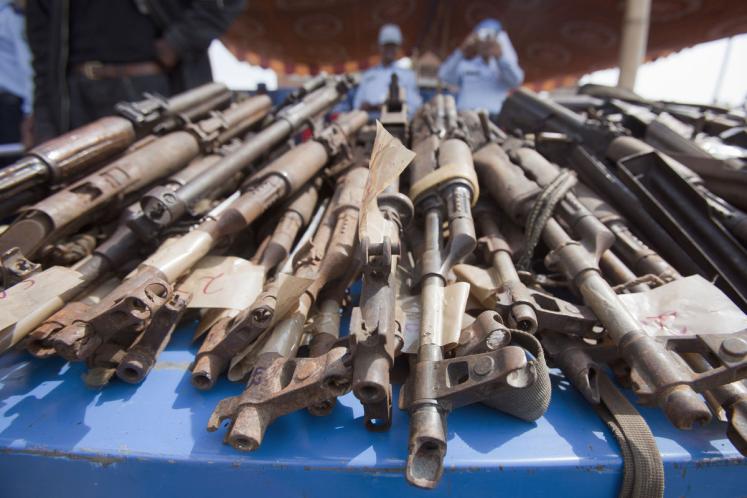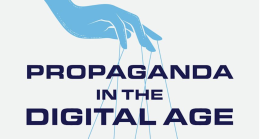In July 2014, the intergovernmental Open Working Group on Sustainable Development Goals (SDGs) published its proposal for the post-2015 agenda. Compared to the previous Millennium Development Goals, which contained “only” 8 goals and 18 targets, the proposed SDGs feature 17 goals and 169 targets. Irrespective of whether Member States will be able to reduce the number of targets in ongoing negotiations leading up the September 2015 Summit, measuring and reporting on the considerable number of goals and targets will face Member States with a major challenge.
One of the most difficult challenges in this respect relates to the measurement of crime and illicit activities. Currently, crime and illicit activities feature in four of the goals set by the Open Working Group with specific references in at least seven targets. Spanning from trafficking in women and girls to illegal fishing and poaching of protected species, these targets encompass a broad variety of activities.
|
Goal 5: Achieve gender equality and empower all women and girls. |
Target 5.2: Eliminate all forms of violence against all women and girls in the public and private spheres, including trafficking and sexual and other types of exploitation. |
|
Goal 14: Conserve and sustainably use the oceans, seas and marine resources for sustainable development. |
Target 14.4: By 2020, effectively regulate harvesting and end overfishing, illegal, unreported and unregulated fishing (…) |
|
Goal 15: Protect, restore and promote sustainable use of terrestrial ecosystems, sustainably manage forests, combat desertification, and halt and reverse land degradation and halt biodiversity loss. |
Target 15.7: Take urgent action to end poaching and trafficking of protected species of flora and fauna and address both demand and supply of illegal wildlife products. |
|
Goal 16: Promote peaceful and inclusive societies for sustainable development, provide access to justice for all and build effective, accountable and inclusive institutions at all levels. |
Target 16.1: Significantly reduce all forms of violence and related death rates everywhere. Target 16.2: End abuse, exploitation, trafficking and all forms of violence against and torture of children. Target 16.4: By 2030, significantly reduce illicit financial and arm flows, strengthen the recovery and return of stolen assets and combat all forms of organized crime. Target 16.5: Substantially reduce corruption and bribery in all their forms. |
|
Based on the Open Working Group proposal for Sustainable Development Goals A/68/970 (July 2014).
|
|
All of these targets are considered to be major threats to the achievement of global sustainable development in the next 15 years. As such, it is critical that they be prioritized, monitored, and measured. Yet, a key challenge related to illicit criminal activities is that by their very nature these targets are difficult to measure.
Why are illicit activities so difficult to measure?
Illicit and criminal activities pose extra challenges for at least three reasons:
-
First, illicit activities are informal and hidden by nature. In most cases, success for the perpetrators of these activities lies in not being detected and in remaining as discreet as possible.
-
Second, the sources of data that are typically used each have inherent limitations. Most information on illicit and criminal activities comes from law enforcement agencies (police, customs) and other official sources. As such, this data is often one-dimensional and tends to be based on indicators of performance linked to the priorities of public authorities (e.g. seizures of certain illicit goods) rather than an accurate picture of the scope and impact of criminal and illicit activities in a country.
-
And finally, international reporting on illicit activities has historically been a very challenging endeavor because of its political sensitivity. States continue to regard security, justice and law enforcement as domains that fall exclusively within their sovereignty. The idea of the international community measuring and monitoring state performance in these areas remains contentious and extremely sensitive.
The need for new approaches
A recent report estimates the cost of measuring the set of 169 targets featured in the current SDGs at about $254 billion. That would mean spending roughly 12.5% of major donors’ Official Development Assistance on these measurements over the next 15 years. Considering the limitations listed above, one may legitimately ask: is it worthwhile spending time and resources to gather statistics that would in the end tell us very little about the reality of these threats?
Given that developing global data collection efforts on each of these targets seems unrealistic, it is of utmost importance to develop alternative and cost effective methods for data collection. From rapid survey methods and the use of mobile technologies to DNA testing to identify the source of smuggled ivory and the use of geospatial technologies to map IUU fishing, there are many existing initiatives that efforts to measure the SDGs could draw upon.
In addition, while much importance has been placed on accounting for regional and national specificities in the context of achieving the SDGs, it is quite surprising to see how little attention has been given to the development of region-sensitive targets. Prioritizing targets based on the availability of data at a regional level and on their relevance for specific regions could be an option to both reduce the costs and increase the quality of data. For example, while homicide rates might be good indicators of violence in regions such as Central America, they are not a good indicator of violence in regions where homicides are low but personal insecurity related to intimidation, abuse, and sexual violence is high.
Finally, due to the inherent limitations of measuring illicit activities quantitatively, much more should be done at the qualitative and analytical level to better understand the mechanisms and dynamics at play and identify tangible policy solutions. Beyond numbers, understanding the nature of these activities, their modus operandi, the people and groups involved and analyzing their impact on societies, especially in regions which are most vulnerable to these threats, can bring much more analytical value to the table, especially when deciding on feasible policy responses.
While the introduction of these new goals must be welcomed, the targets currently set are ambitious, not only with respect to what can reasonably be achieved, but also in relation to what can actually be measured in a cost-effective way. Therefore, while the SDGs continue to be finalized this year, it would be beneficial to consider newer alternatives for data gathering that will paint a clearer picture of our progress.
Suggested citation: Louise Bosetti., "Measuring Illicit Activities: Will It Be Worth the Trouble?," UNU-CPR (blog), 2015-02-08, https://unu.edu/cpr/blog-post/measuring-illicit-activities-will-it-be-worth-trouble.





